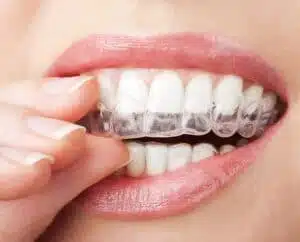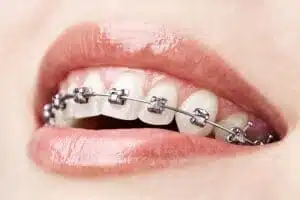Can Braces Make Your Smile Wider?
Tips for Choosing the Right Licensed Orthodontist Roseville CA
The Uniqueness of Smiles
Smiles are like the magic key. They open doors, relieve tensions, and express joy. People use smiles every day for many reasons. Unfortunately, not everyone likes the appearance of their smile, so they tend to hide it or avoid smiling fully.
Narrow smiles, broad smiles, gummy smiles, shy smiles, toothy smiles. Every person has a unique smile. Smiles are as unique as fingerprints. However, unlike fingerprints, smiles can be altered. Enter the orthodontist.
Every person has their idea of “the perfect smile.” If your smile doesn’t meet your expectations, seeing an orthodontist can help.
An orthodontist uses braces, Invisalign, and other orthodontic appliances to create a better, more balanced smile. There is no universal smile formula, but using a patient’s natural attributes and aligning teeth can achieve a balanced and aesthetically pleasing look.
Having a great smile can boost self-esteem and confidence. Whether you have braces as a teen, young adult, or even as a retiree, the benefits of discovering your dream smile can be life-changing!

Smile Arc
The smile arc or smile curve is the way that a smile follows the contour of the bottom lip. A “perfect” smile arc is when the line of the teeth matches the contour of the lip. This creates an aesthetically pleasing balanced look.
Orthodontists work to align teeth to create a pleasing smile arc using Invisalign, braces, and other methods.
Smile VME
Some people are distressed that, when they smile, too much of their gum tissue is exposed. This is commonly referred to as a gummy smile, but the technical term is Vertical maxillary excess (VME).
There are many ways to correct a gummy smile including orthognathic surgery. Most orthodontists will attempt non-surgical methods first.
An orthodontist will use braces to shift the teeth to decrease the gummy appearance. By changing the positioning or contour of the teeth, the overall appearance will improve and make the gums less prominent.
Some of the other methods in use include Botox or dermal fillers and surgical methods such as scaling.
Broader Smile
When you hear someone refer to an ear-to-ear grin, they are talking about the broadness of the smile. While having a smile that spans from ear to ear isn’t appealing, the appearance of a broader smile can be. A narrow smile is often defined as a smile where six or fewer teeth display with an open-lipped smile.
In some instances, correcting alignment with Invisalign or braces can naturally widen a smile. In other cases, the narrow smile is caused by missing teeth or a small maxillary arch. Although narrow smiles are quite common, people often seek to broaden their smiles.
Having a broad smile creates a more youthful appearance. Who wouldn’t want that?

Can Braces Make Your Smile Wider?
How Braces Make Your Smile Wider
The simple act of aligning the teeth and creating proper spacing across the mouth can make a smile wider.
Braces work using tension to create force, which shifts teeth into the proper position. The orthodontist begins by affixing tiny brackets to each tooth. These can be stainless steel, clear ceramic, or other metal. The archwire is threaded through each bracket and tightened.
When the orthodontist tightens the wire it creates the tension necessary to shift teeth. About every six to eight weeks, the orthodontist will adjust the tension to keep teeth moving slowly until they are properly aligned. As teeth shift, they become evenly spaced across the width of the smile, creating a broader appearance.
How Invisalign Makes Your Smile Wider
Like traditional metal braces, Invisalign can align teeth to create a wider smile. When teeth are misaligned, crooked, or crowded, they can make a smile appear narrow. By correcting the alignment, the natural curve of the smile becomes more visible.
Invisalign works using gentle and constant pressure to create the force that shifts teeth into alignment. It is a system of almost invisible tray aligners that are worn over the teeth. A patient switches to a new set of trays about every two weeks. Each tray set moves teeth slowly toward the goal of a properly aligned and perfect smile.
Patients wear the trays for 20 to 22 hours each day. They are removable for eating, drinking, and oral care. Unlike braces, there are no dietary restrictions with Invisalign. With no wires and brackets, oral hygiene is also much easier. It is easy to see why Invisalign is a very popular orthodontic treatment.
Phase 1 Early Treatment
The American Association of Orthodontists (AAO) recommends that children see an orthodontist by their seventh birthday. The reasoning behind this recommendation is to catch and correct potential orthodontic problems early.
When a child is between the ages of 7 and 12, they are experiencing their most rapid growth. Using that natural growth, an orthodontist can correct bone growth non-surgically. Using non-invasive treatments such as palatal expanders and braces, an inherited narrow smile can be corrected more easily.
Although many children will not need early intervention. Phase 1 Treatment when it is necessary is much less traumatic than waiting. By guiding the bone growth, an orthodontist can ensure that your child has a healthy smile.

